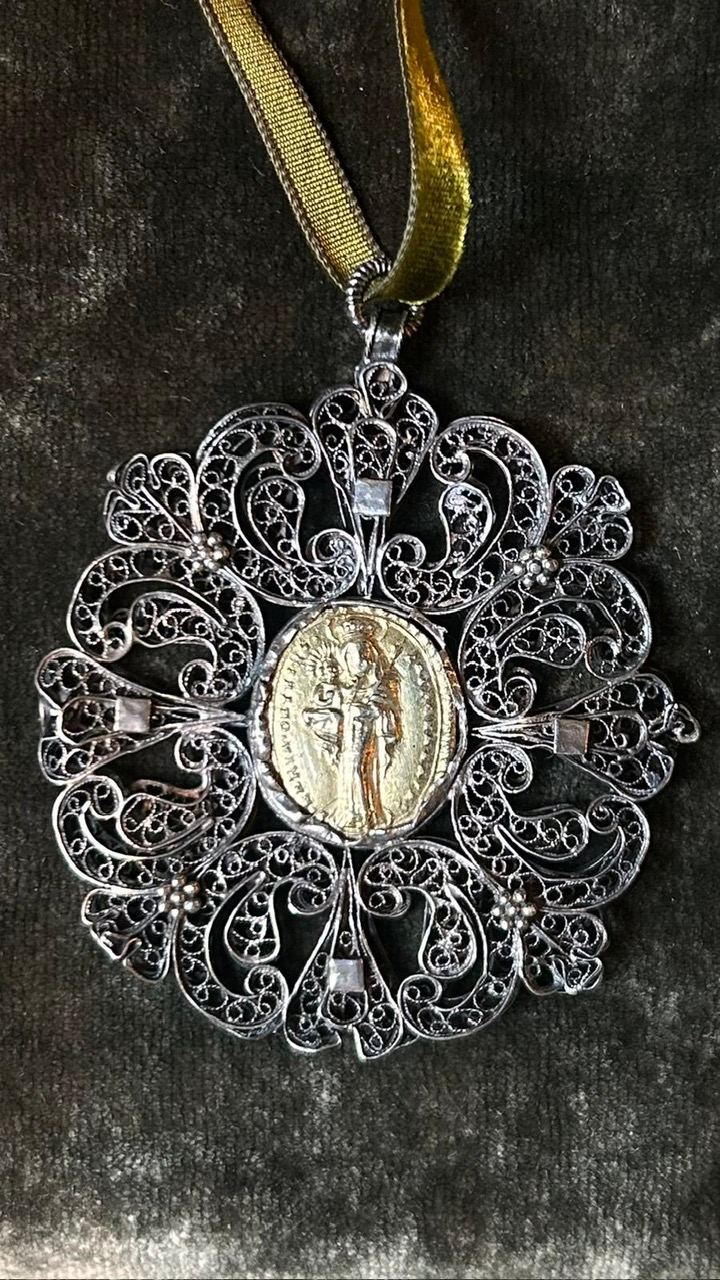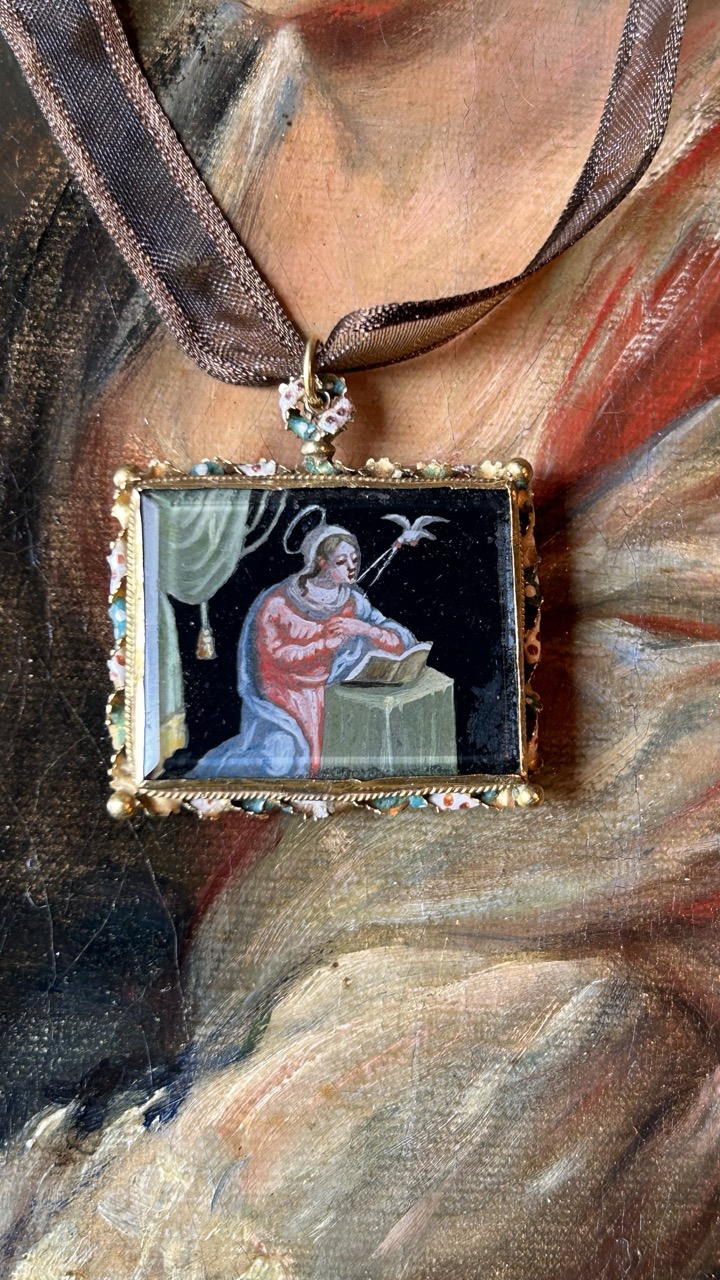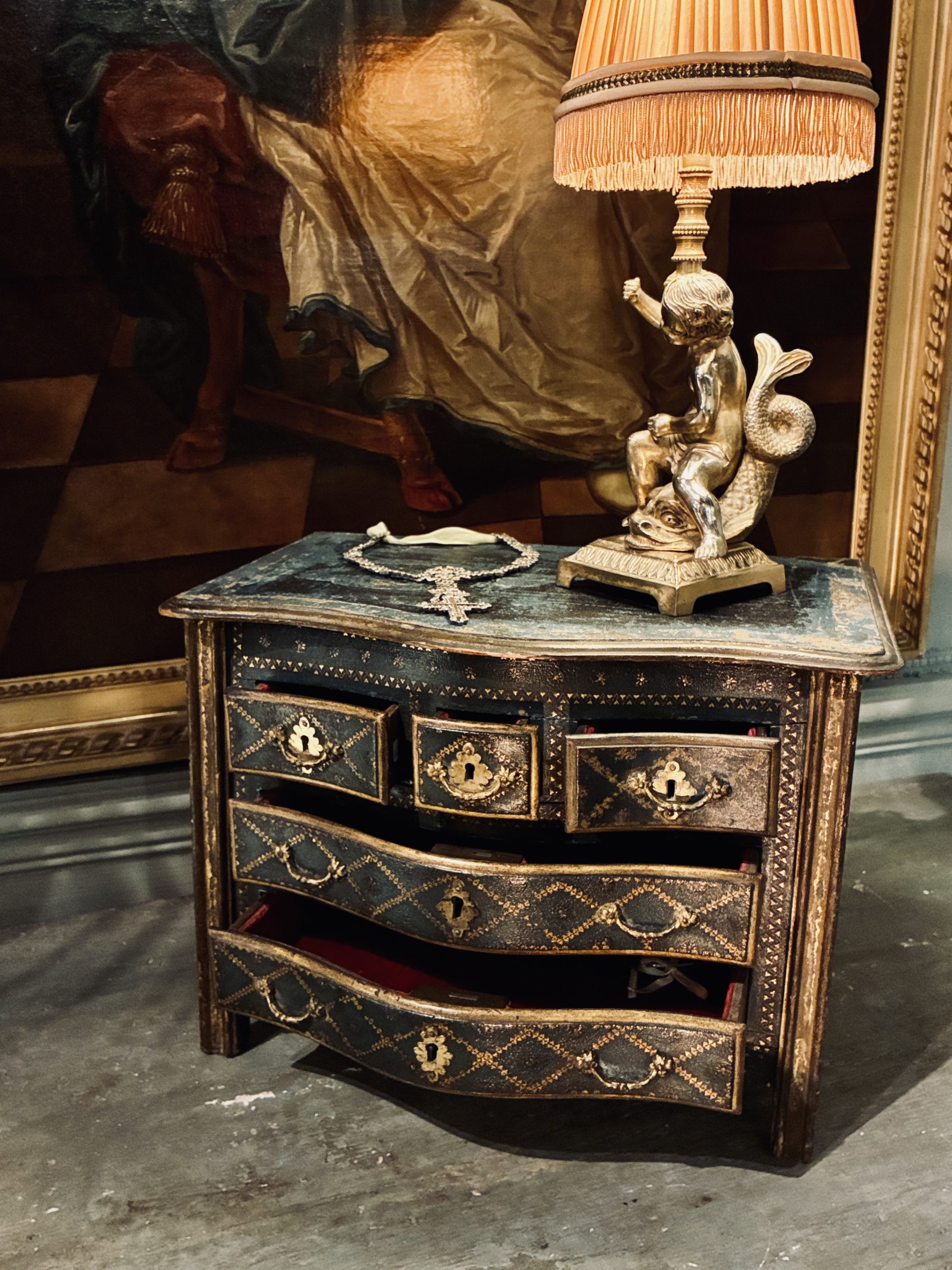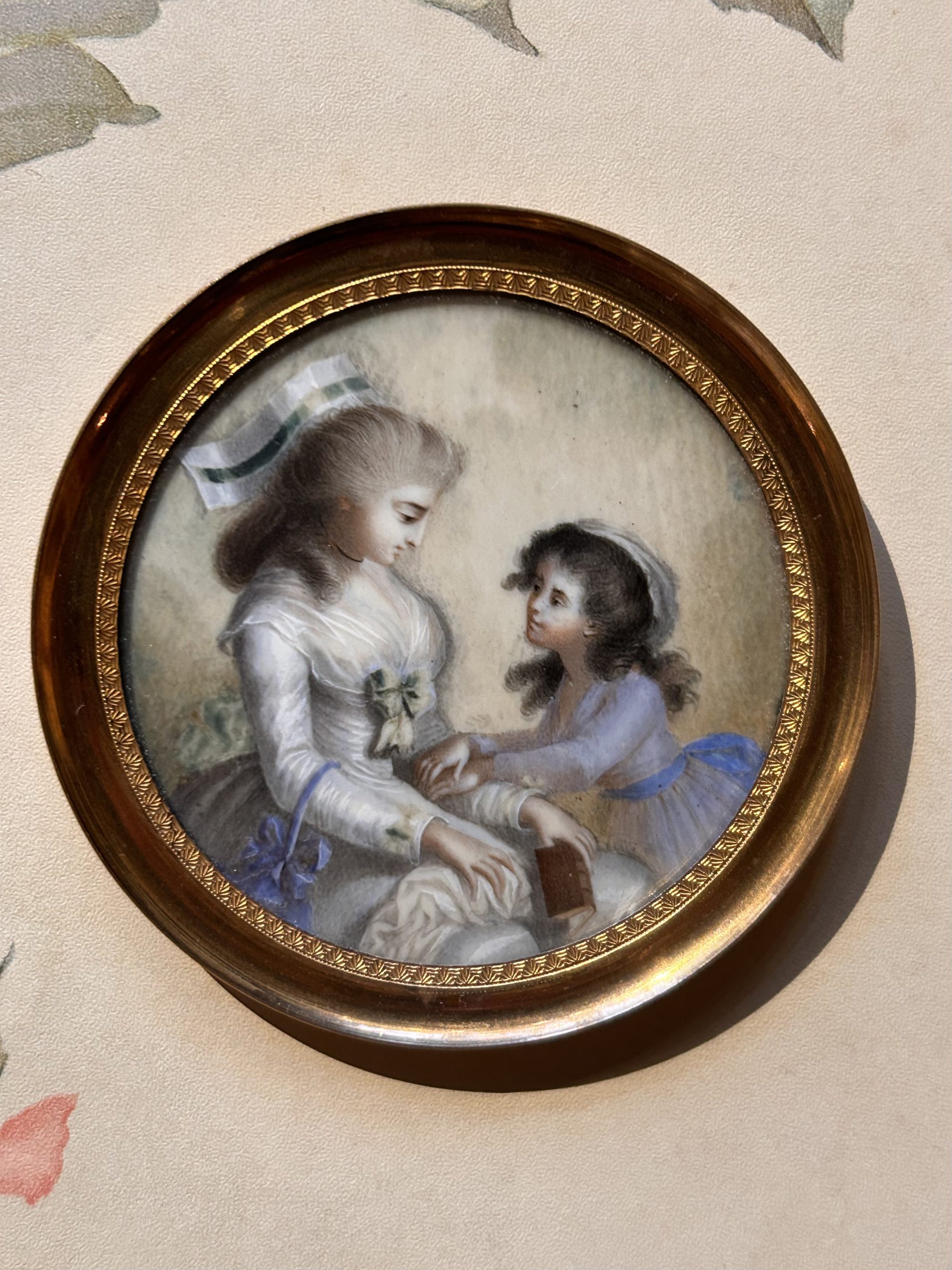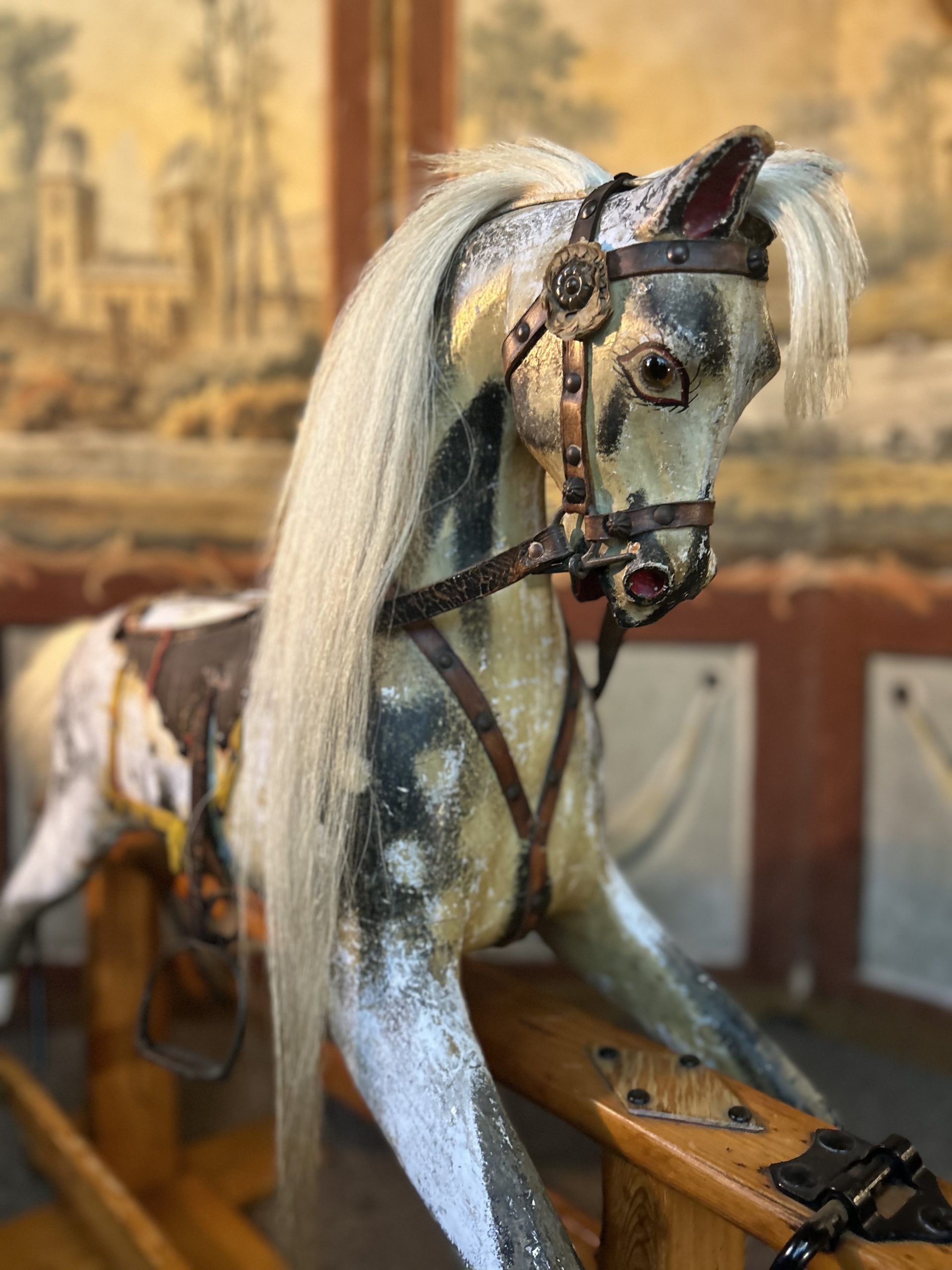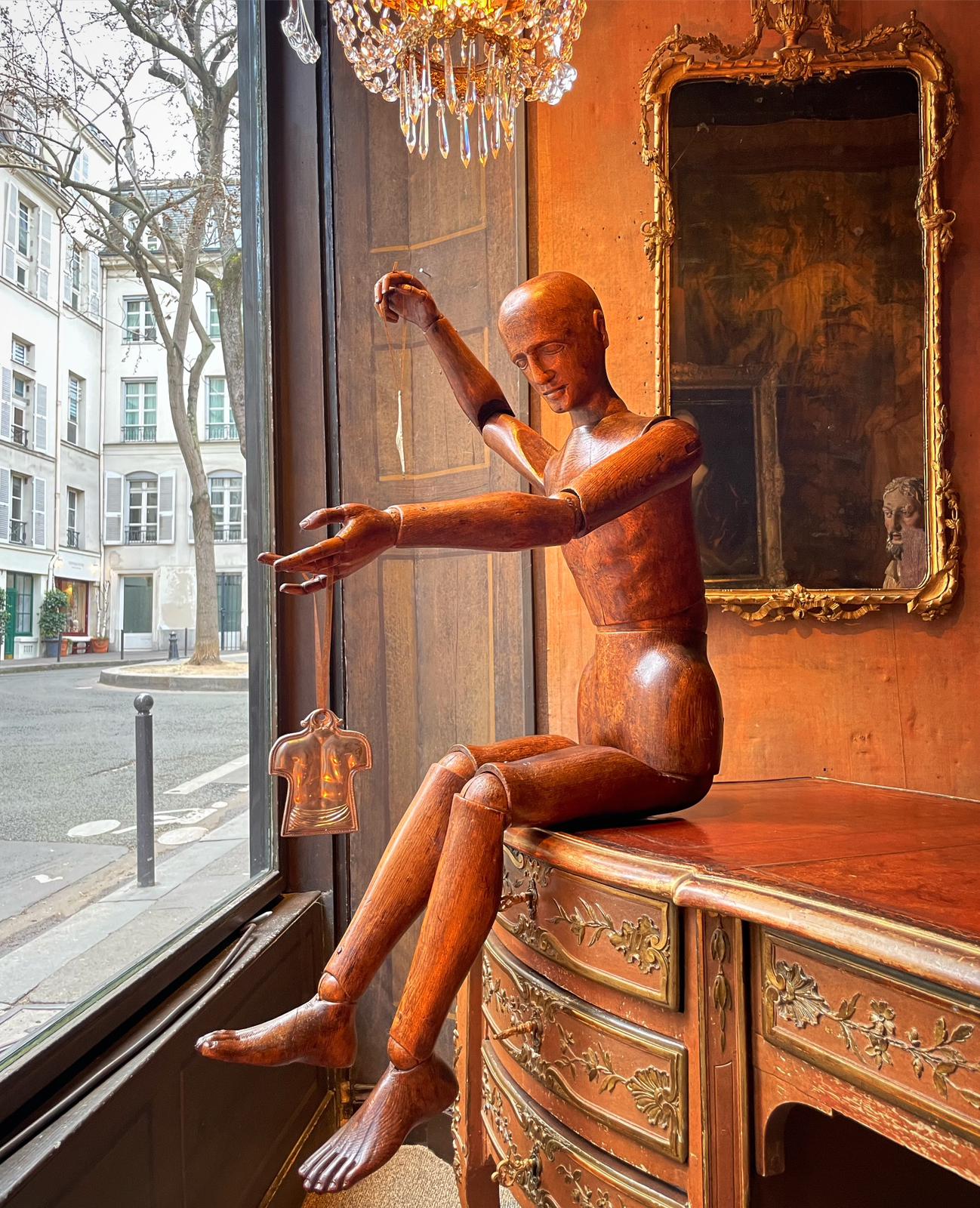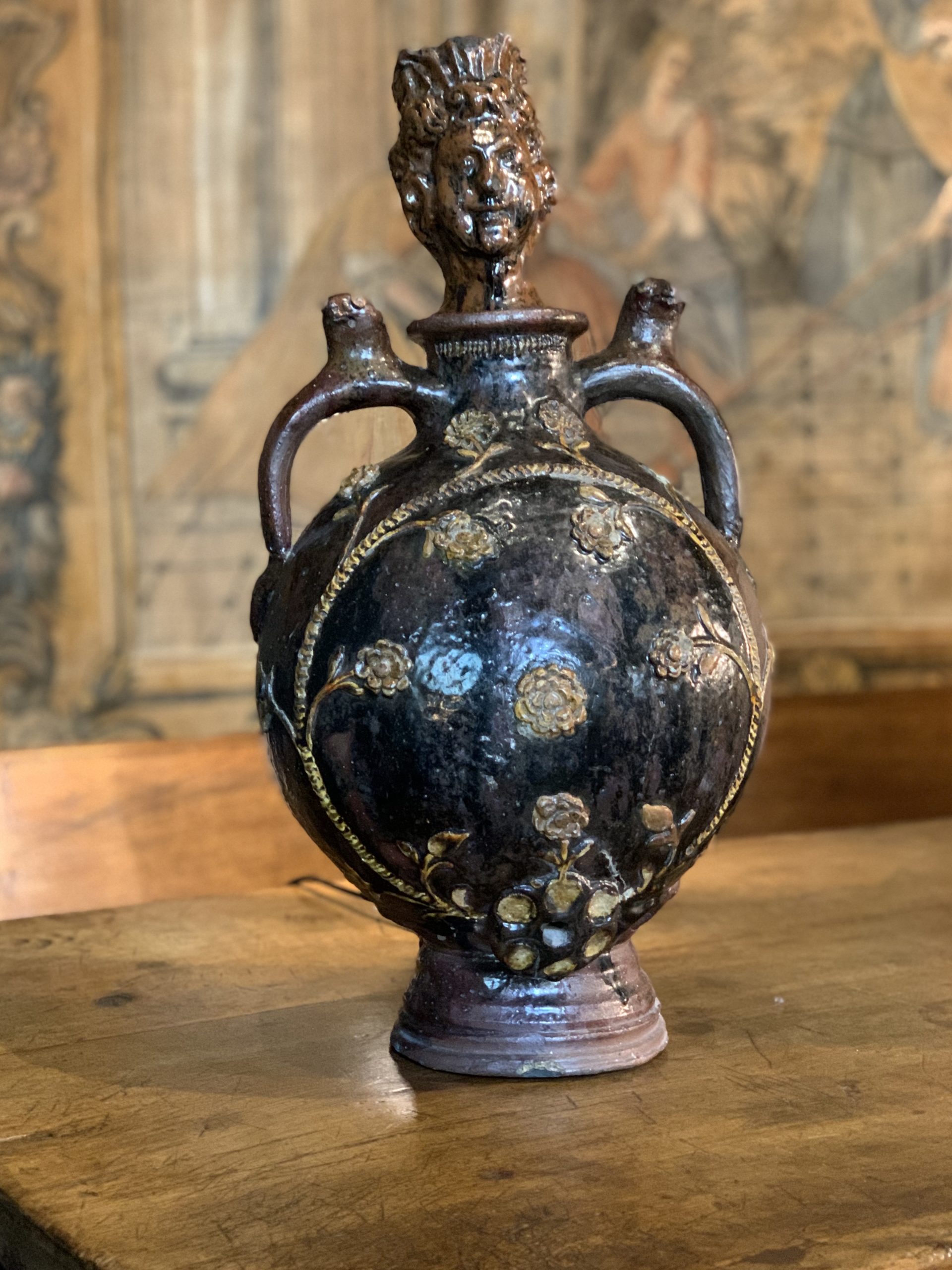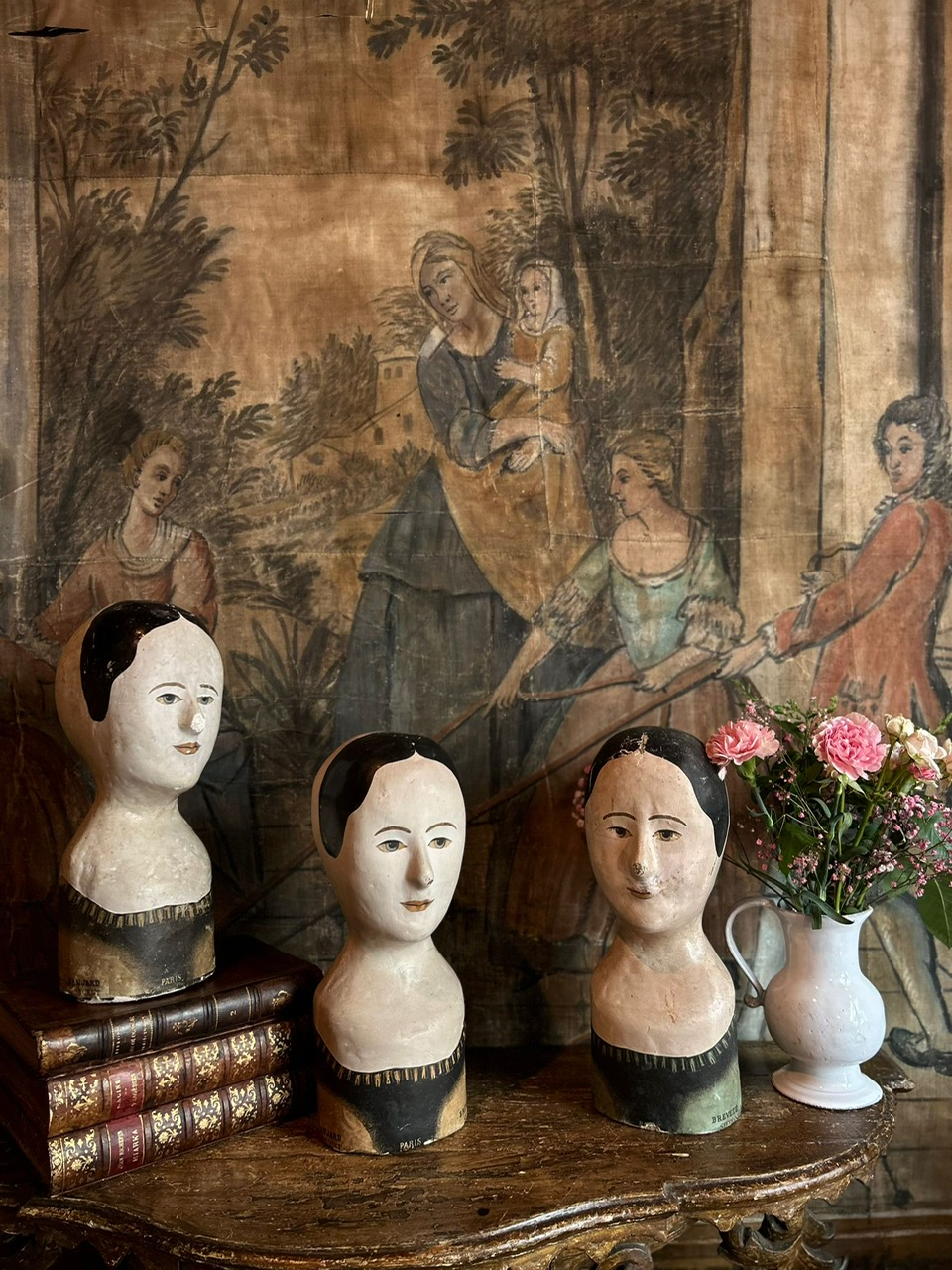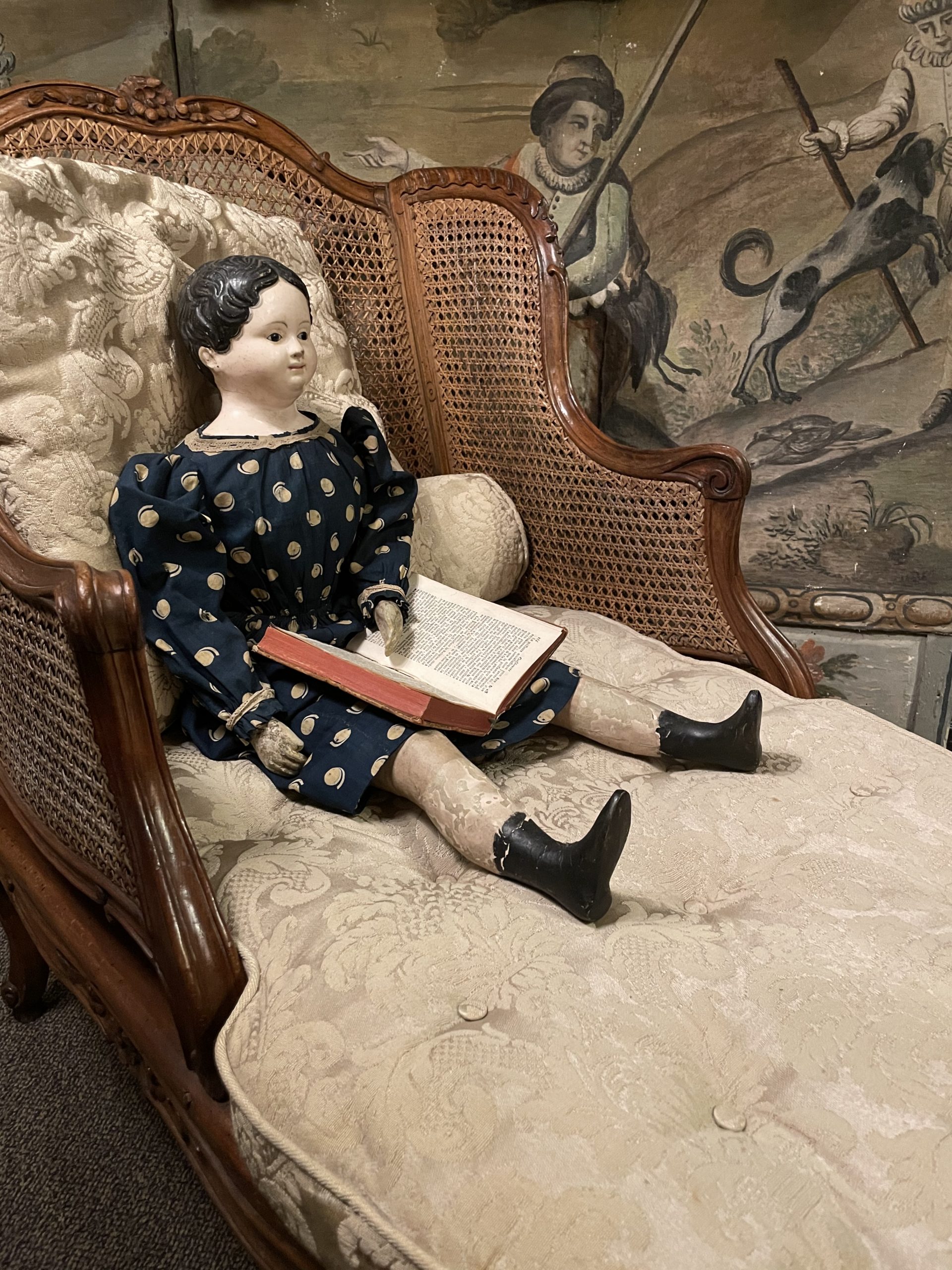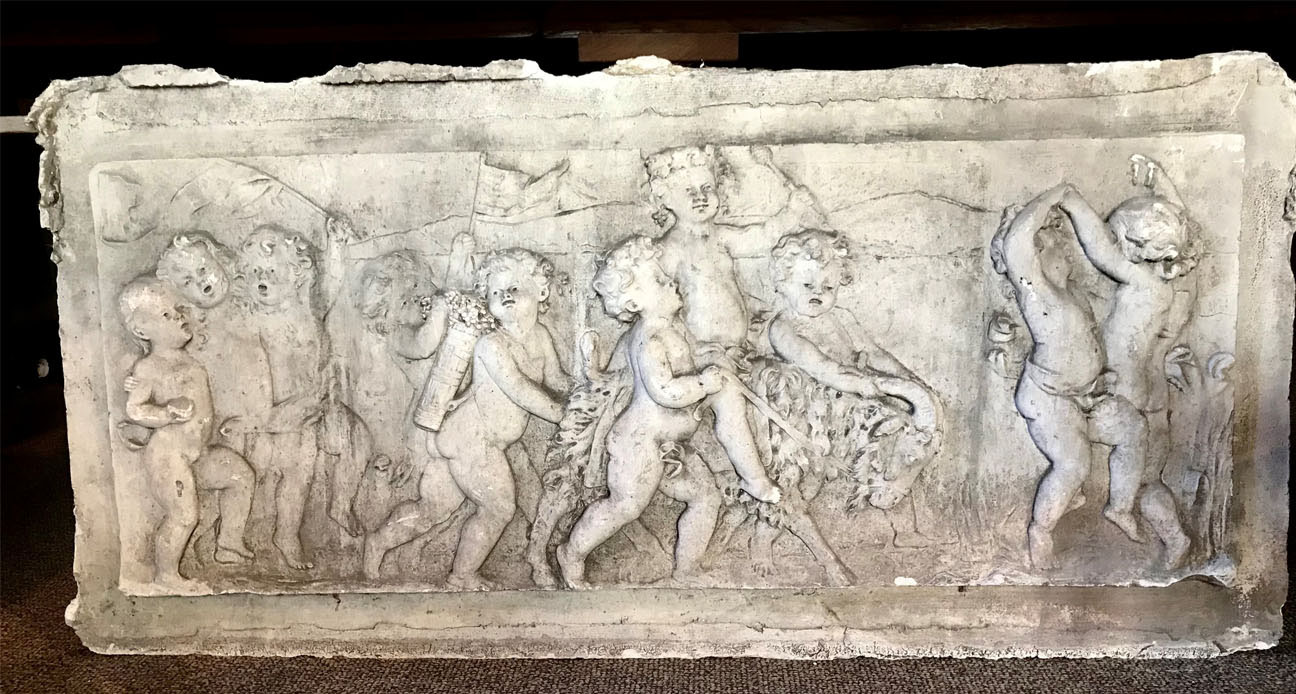Made using the traditional filigree technique typical of 17th-century Spanish craftsmanship the medallion features meticulous work of intertwined silver threads creating complex and detailed openwork designs.
Miniature pendant- double-sided painted fixed under glass representing the Virgin Mary and Saint Joseph, yellow gold frame decorated with spiral patterns in enamelled polychromy.
Spain
17th century
Mastery chest transformed in a jewelry box in gilded polychrome wood opening on 5 velvet lined drawers inside, locks and handles in gilded metal.
19th century
France
“Mother and daughter”, oval miniature painted in gouache on ivory in an oval hoop to hang in gilded bronze.
Around 1780
Painted apple grey wooden rocking horse, original mane, sulphide eyes, original tacks, “Rambler Liverpool” label.
Liverpool, England
late 19th century.
“Pure Greek beauty, supple and dignified (…) who gazes with calm indifference at the crowds who gaze at him speechless.”
At the end of the Middle Ages pottery villages around the town of Vindefontaine were born. They set up a large potter’s house, and made butter pots, pitchers, inkwells, vases, but above all potty sandstone fountains with brown enamel decorated with kaolin.
XVIII century,
West Normandy,
France.
Marottes in polychrome painted papier-mâché and glued printed paper, presenting a female figure with black hair and a scalloped bodice. Marked DANJARD L. Vincent Paris Patented in 1860 Successor, on the base.
Pauline doll, German Nuremberg cardboard box with its original clothing.
Sulphide eyes.
Circa 1830
Germany
Plaster bas relief “Bacchanal”, very cheerful and lively festive atmosphere.
The theme of children with goats is one of the commonplaces in the history of sculpture.
Early 20 th C.
France

